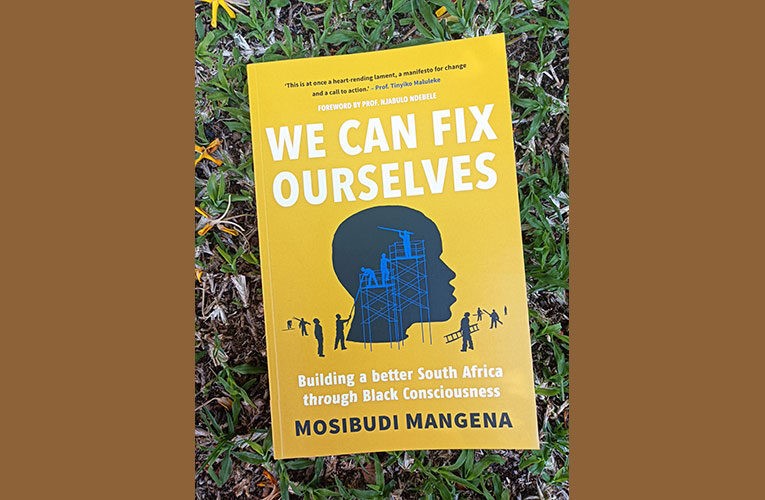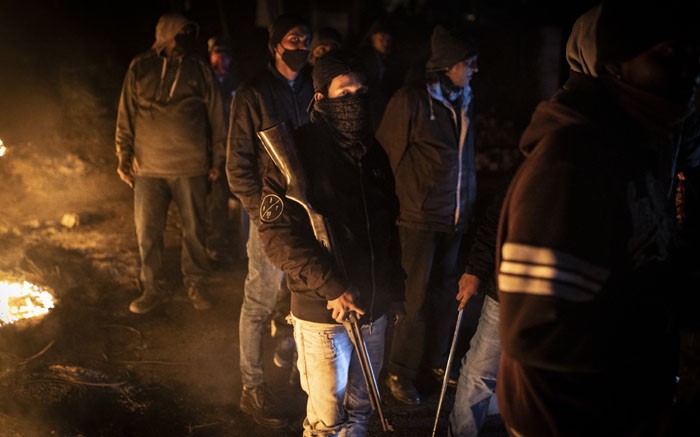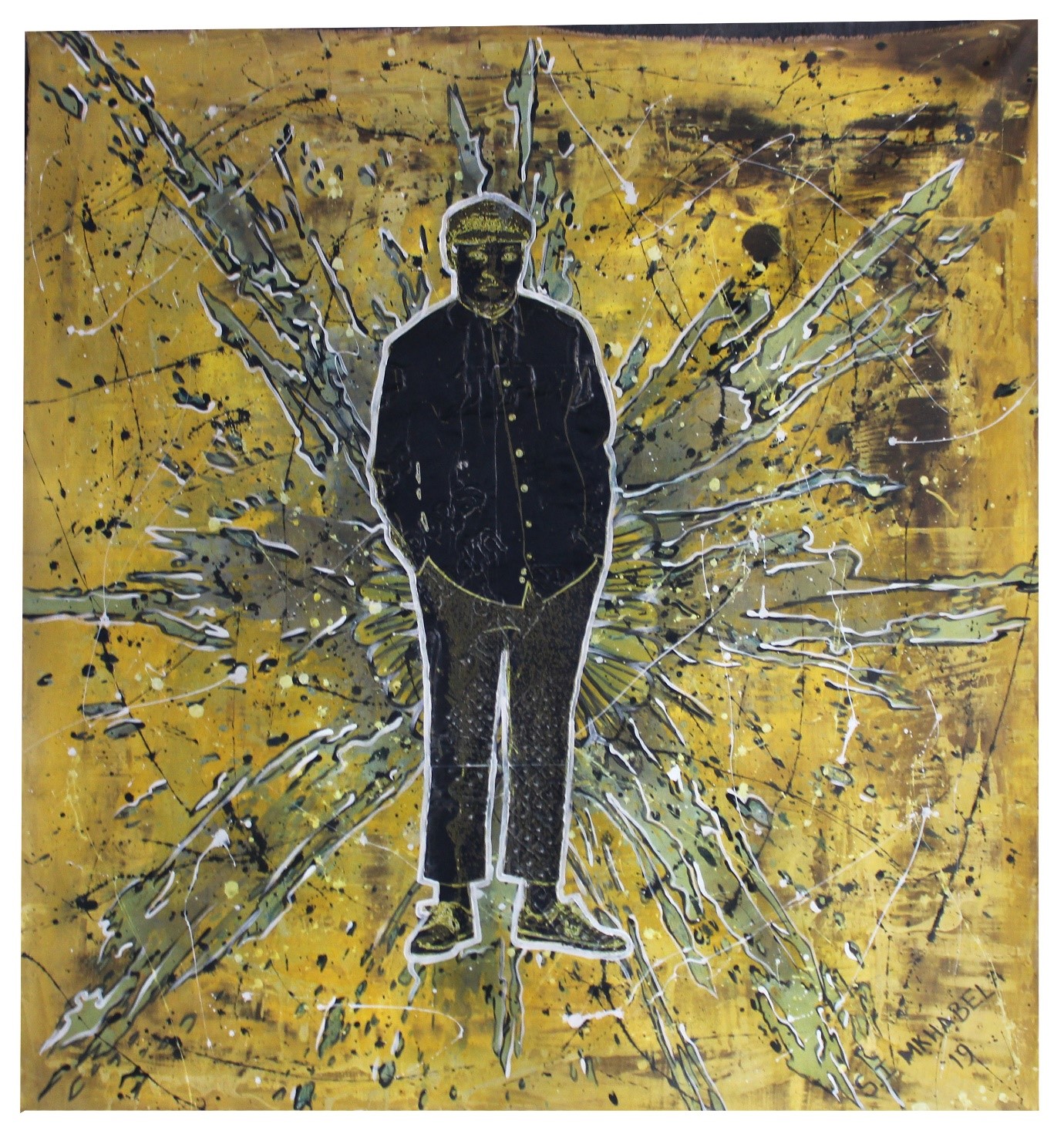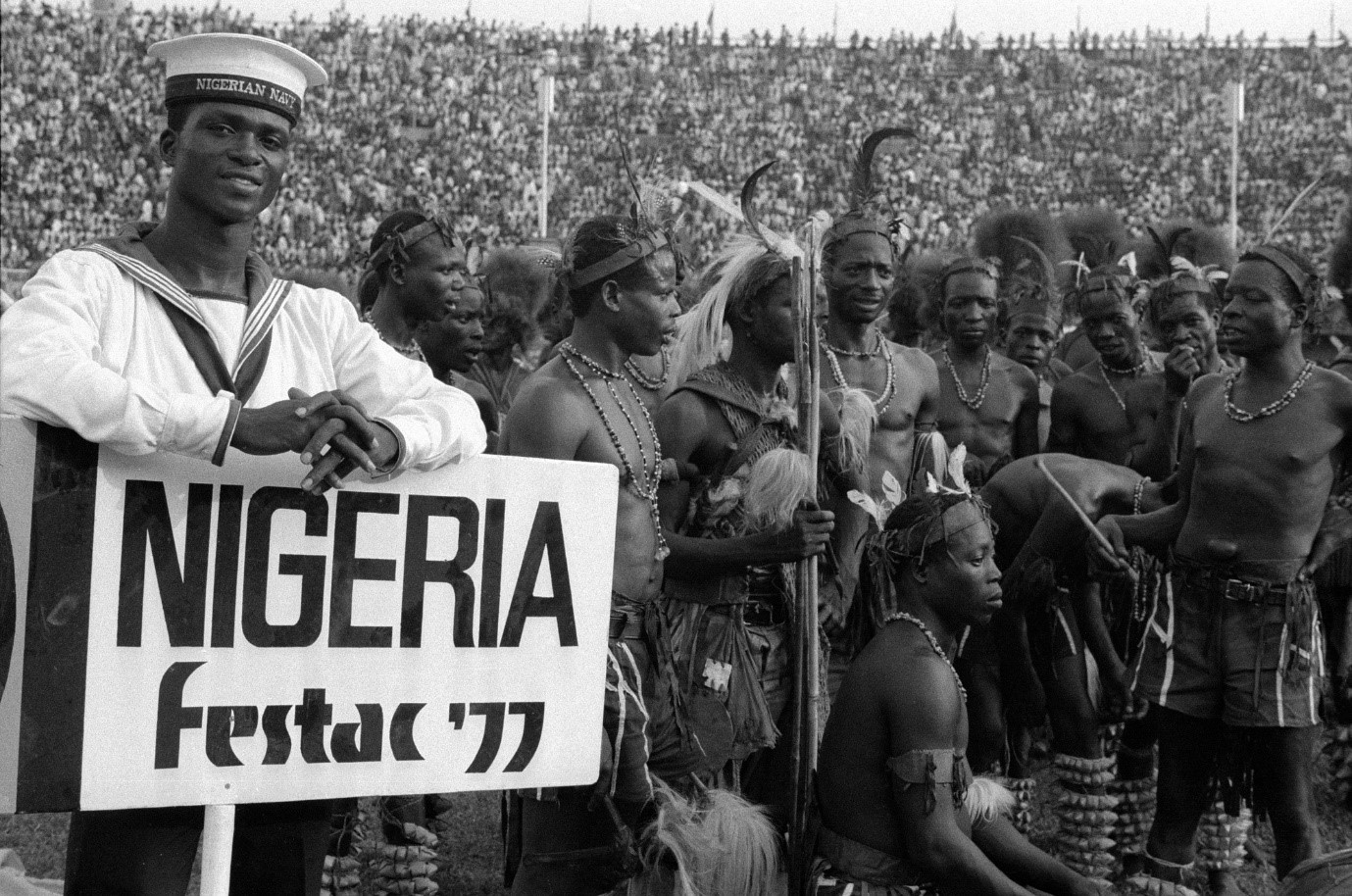“I do not want to South Africa anymore…I want to Azania,” (Makhafula Vilakazi in Words).
Scholarship on Black Consciousness in the so-called post-apartheid South Africa is not as prominent as its counterpart within the Congress tradition. The fundamental reason for this is the hegemony and pervasiveness of whiteness and its aversion to the Black Radical Tradition. Another reason is the “success” of the Congress tradition as epitomized by the ANC through its so-called negotiations to usher in an era that is compatible with its political vision of a non-racial constitutional new South Africa. It is in this sense that the intellectual and ideological marginalization of the Azanian tradition which Black Consciousness is a part of is intimately linked to the “failure” of its political vision. In other words, the triumph of the democratisation paradigm, instead of the decolonisation paradigm is not only political but is also epistemological and ideological. The political vision of the Azanian tradition is encapsulated in the metaphors by Sobukwe and Biko, namely the African tree and table and entails the integration of whites into an African/Black majority culture and rule in a post-conquest Azania. In terms of this political vision which “failed” during the birth of post-apartheid South Africa, nonracialism is only possible in a post-white supremacy Azania which has transcended European colonial conquest since 1652. Herein lies the distinction between the nonracialism of the Congress tradition and that of the Azanian tradition. The nonracialism of the Congress tradition is satisfied with the hegemony of white supremacy which is premised on the African majority being integrated into white settler colonial culture and rule. Why this political and historical backdrop? This is because the book We Can Fix Ourselves: Building a better South Africa through Black Consciousness (2021) by Mosibudi Mangena under review locates itself within the philosophy of Black Consciousness in discussing the fundamental problem of the so-called new democratic South Africa. The book is divided into 16 concise chapters. The style of writing is clear, making the book easy to comprehend despite its many chapters. In addition to this, what facilitates the easy comprehension of the book is its simple overarching argument which is encapsulated in all the chapters. The book identifies colonial mentality as the underlying problem in the so-called new South Africa. Chapters 1 to 15 provide examples and empirical evidence to the effect that the black inferiority complex because of centuries of colonialism and oppression makes blacks who are a majority remain in poverty and inequality. Among many other things the book foregrounds the black majority government led by the African National Congress, which has failed to uplift the black majority from poverty and inequality since it attained political power as a case in point of colonial mentality and its concomitant problem of self-hatred. The persistent disasters in public service especially health and education are underscored as a prominent corroboration of the lack of Black Consciousness among blacks in general in South Africa and the devastating ramifications of colonial mentality among the black majority. The book provides a diagnosis and a prescription. This is done by positing that colonial mentality among blacks as a majority is a fundamental problem while the philosophy of Black Consciousness is the suggested dose to deal with this problem. The title “we can fix ourselves” captures the ideological prescription of Black Consciousness. The argument of psychological liberation that this book advances is central to the Azanian tradition.
Genealogically we can trace this argument to Lembede and his political philosophy of Africanism. Part of this philosophy is that Africans must free themselves from the domination of foreign ideologies and must rely on their ideas and themselves to attain self-determination. Lembede lamented the debilitating conditions of Africans during his time in the 1940s and posited that Africans should pursue mental liberation through his idea of Africanism. Lembede argued just like this book that Africanism which propagates African self-reliance and race pride will eventuate in African liberation. Sobukwe and Biko as prominent figures of the Azanian tradition latching on Lembede’s seminal ideological contribution continued the argument of psychological liberation as central to physical freedom.
In addition to the argument of psychological liberation, the book in line with the philosophy of Black Consciousness posits that by eliminating colonial mentality blacks as a majority can take their destiny into their own hands and evade wallowing in victimhood. “A better South Africa” can be built on the foundation of the philosophy of Black Consciousness which will eventuate in the eradication of the black inferiority complex and white superiority complex which characterize colonial mentality. The self-hatred of blacks reflects the inferiority complex while the arrogance of a white minority in power is indicative of a superiority complex. The book is not ahistorical to suggest that only the philosophy of Black Consciousness can cure colonial mentality as it also alludes to the material foundation of racism. The book does this by arguing that central to racism is white economic interest. In line with the spirit of black nationalism, the book suggests that blacks as a majority should exercise their agency in the form of black solidarity and build their institutions rather than blame whites for their current problems. It does this by proffering the examples of some of the icons of Black Consciousness such as Ramphele who used a self-help mentality to build institutions amid apartheid to uplift black communities in which they worked as activists. The book also joins the constitutional fray. It does this by positing that Black Consciousness is compatible with the final constitution. Ironically, redolent of the Congress tradition the book argues that the final constitution is the most liberal and best in the world but to be concretised for the benefit of the black majority, a dose of Black Consciousness is needed. When the promises of the final constitution are realised by combining it with the philosophy of Black Consciousness then South Africa can be a country in which “blacks and whites live in harmony”.
South Africa will be an Azania in which “there are no blacks and whites but just people”. A very intriguing contradiction in terms. A desire to be black and human/person, a case of South African double-consciousness perhaps on the part of Mangena? This South Africa now renamed Azania will have a human face. The book comprises many chapters which we will unpack in the following paragraphs to underscore its fundamental argument as alluded to above and some of its glaring contradictions. Because of the brevity of this review, we will not delve deeper into each chapter, but we will proffer an overview of each chapter. Following this, we will highlight three fundamental flaws which will entail our critical analysis of the book.
The book opens with a rather liberal and dull Preface by Njabulo Ndebele for someone who is associated with the Black Consciousness movement. It sounds more like an ideological offering from someone within the Congress tradition. Its emphasis on cosmopolitan consciousness and its compatibility with Black Consciousness is rather puzzling and exudes the miasma of the anti-black writings of Achille Mbembe for instance in Critique of Black Reason (2013). While the preface laments white supremacy in South Africa and emphasizes self-transformation and black solidarity it still operates within the terms of reference of the Congress tradition and its broad South Africanism. Ndebele posits that “As the “black tribes” of South Africa became urban, spreading across the landscape, simultaneously forced, and attracted by economic opportunities, they evolved a cosmopolitan consciousness. On the other hand, “white” South Africans in pursuit of racial superiority, evolved an isolationist, self-obsessed mindset. This deprived them of the opportunity to play a significant role in the evolution of an inclusive cosmopolitan human environment”. This could have been easily penned by a prominent Congress tradition figure like Pallo Jordan in Letters to my Comrades (2017). The Introduction by Mangena sets the tone of the entire book by underscoring the prevalence of colonial mentality and its debilitating effects on the black majority. The building of an anti-racist South Africa with a humane face is also highlighted. Mangena argues that “while acknowledging the presence of other factors, this book concerns itself with the debilitating role of colonial mentality among a black majority that stymies efforts towards the showing of the more human face”. And this is how his notion of Black Consciousness is equated with African Humanism throughout the book. This is bizarre because the categories black and African are not ontological equivalents but have different histories. African precedes European colonial conquest, while black is an invention and reaction to white settler colonialism - its condition of possibility. Humanism is an invention of abelungu (Europeans) who imposed it on Abantu (Africans) through colonial miseducation.
Overview
Chapter 1 discusses the horror-ridden South African healthcare system. It makes the obvious point that the system is on the verge of collapse. It also proffers examples of the activists within Black Consciousness who made a better contribution to health than what the black majority is doing today with political power and resources. The point is that administration is bad, and that self-hatred is rampant. Therefore, Black Consciousness is needed. Chapters 2 to 4 have thematic unity. They discuss education in general. The point is that the black majority should give priority to mother-tongue education. The chapters lament the noise around decolonisation without practical implementation. Chapters 5 and 6 continue to make a point about the absence of the mother tongues of the black majority in arts and culture. They also lament the paucity of African aesthetics and ascribe this to the slave mentality of the black majority. Chapter 7 deals with the transport system and its failures. The chapter argues that the black majority needs to aim higher in terms of the kind of transport system they deserve. It argues that corruption and an inferiority complex are responsible for the failure of the transport system given what is currently available. The chapter laments the violence in the taxi industry and the dysfunctional public trains. Chapter 8 discusses perhaps the most important aspect of South Africa, namely the economy. The chapter begins by explaining the origin and reason behind townships. The chapter argues that black businesses can be developed and made to flourish in townships. It also argues that big malls destroy township small businesses. The chapter gives the dubious example of the black business products of Apartheid such as Mashaba and Maponya as models to be followed by blacks in the townships. The solid Black Consciousness critique of the Apartheid-driven Urban Foundation and the creation of the black elite as a buffer class as part of Botha’s Total Strategy is suddenly forgotten by someone with a long history within the Black Consciousness movement. Chapter 9 makes a historically valid point that the creation of SOEs was motivated by the so-called Afrikaner nationalism to uplift poor whites. The chapter laments the fact that the democratic government of the black majority is not learning from the example of the so-called Afrikaner nationalists. Rampant corruption and colonial mentality are underscored as the reason behind the near-collapse state of many SOEs under the government of the black majority. The Zondo commission is used as recent evidence in this regard. Chapter 10 is very interesting as it deals with a very topical issue. This is given the needless noise around expropriation with/without compensation debate and the futile amendment of section 25 of the constitution. The chapter makes a valid historical argument that land dispossession accounts for why 9% of white settlers own 72% of farmland in South Africa. The chapter also makes the valid point that all human activities be they economic or cultural depend on the land. The chapter however overemphasizes the failure of land reform thus conflating land restoration and land reform. This point is discussed extensively below when we discuss the fundamental flaws of the entire book. But at this stage, we must mention the absurd chapter’s critique of Zimbabwe.
Mangena, with a history of liberation struggle centred on the return of the land through armed struggle ironically, laments Zimbabwe’s “unnecessarily chaotic and often violent land-reform programme”. The same Mangena continues to make the ridiculous argument that “the violence accompanying the land redistribution was unfortunate. Force should have ended with the armed struggle. You don’t have to act unlawfully when you are in power”. While this is ironic coming from Mangena it is understandable due to his incorporation into government by Thabo Mbeki to disarm AZAPO and its radical politics. Chapter 11 is also topical as it deals with the issue of immigration. The chapter argues that the mismanagement of immigration by the government accounts for the so-called xenophobic attacks. While the chapter mentions "South African exceptionalism” it does not delve deeper into the white settler foundation of South Africa as a white man’s land and the formation of consciousness in line with the origin of South Africa as a white settler colony. We discuss this point below to account for the so-called Afrophobic attacks in South Africa and the condition of possibility for the nonsensical but historically inevitable Operation Dudula. Accentuating citizenship and effective immigration laws do not get to the root of black South African consciousness and its anti-African schizophrenia born from the white foundation of South Africa and the pursuit of integration by the excluded blacks to the exclusion of other Africans.
Chapter 12 laments the high levels of crime and the inability of the black majority government to protect its citizens. It makes a valid point by making the connection between alcoholism and violence among the black majority, especially in townships. Chapter 13 laments the fact that corruption is not eradicated due to the incapacity of the criminal justice system and other associated institutions such as the Hawks. The success and failures of the cooperation between mining companies and black communities are discussed in chapter 14. The chapter provides examples of corruption between local community leaders and mining companies. It provides examples such as Royal Bafokeng Nation and Bapo ba Mogale to show the need for the black majority to “harness their minerals”. Chapter 15 discusses the harrowing failures of local governance/municipalities. For instance, the shoddy RDP houses that always collapse and the fact that the black majority is satisfied with them. The chapter makes the argument that despite these failures due to incompetent and colonial mentality-ridden local officials, black voters still elect them to power. Because of this, the chapter argues that these black voters are not victims but accomplices in their humiliation. Chapter 16 begins with a dubious quote by Barak Obama about people and change. With the quote from a figure like Obama already we have a serious problem with liberalism and its unrealistic promises. The chapter makes the argument which underlies the book, namely that if blacks rid themselves of self-hate, they will be the change that they want ala Obama’s liberal gospel. The chapter to cap it all celebrates the constitution by arguing among other things that through Black Consciousness blacks can translate the provisions and promises of this constitution into reality. We will discuss this point further below when we analyse the constitution. The Conclusion of the book indulges in celebratory South Africanism by highlighting several things that all South Africans should be proud of. The conclusion concludes the book by positing the following unrealistic vision “a society where we would talk less and less about black and white, but more about just people”. If there is anything which underscores the underlying liberalism of Black Consciousness despite its radical pretensions and rejection of the Congress tradition, it is this quote. Mangena substantiates our point by stating that “in this way, black and white people would be able to work together as equals, as opposed to the current situation of master and servant, owner and underling or superior and inferior. With that, black and white would be able to relate together in every other sphere of life as equal citizens”. This is an excellent infusion of the Freedom Charter into Black Consciousness by Mangena. There is no better way to capture the vision of “save South Africa” than this quote. This is Mangena’s Black Consciousness gospel of how black and white South Africans “shall overcome”.
Fundamental Flaws
The book has several flaws but for this review, we will limit ourselves to discussing only three. The first one is regarding South Africa and its history. While advocating for the “building of a better South Africa” this book does not explain the origin of South Africa. The book does not discuss European colonial conquest since 1652 in a way that locates the origin of South Africa since 1910 as an exercise in the “right of conquest” by white settlers. This leads to a lack of understanding of the consciousness which underlies South Africa itself. This is not surprising since methodologically this book in its enthusiasm to accentuate agency marginalises structure. South Africa is not just a name but a political formation which is grounded on European colonial conquest thus the racist idea of South Africa as a Whiteman’s land. At the level of foundation and constitution, South Africa was never meant for Africans but only for blacks with a double consciousness who seek integration. It is based on the elimination of the title to territory of the Indigenous conquered people/Africans. According to Sobukwe, the title to the land was the underlying distinction between the Indigenous people and the European invaders (Hook, 2016). For Lembede before him, Africans have a superior right to Africa since they are native to it, and it is wrong to put other non-Africans on an equal footing with Africans. The initial South Africanism was white as it was premised on white nationalism of both the British and the so-called Afrikaners following the Peace Treaty of 1903 which ended the Anglo-Boer Wars and inaugurated their reconciliation to deal with the “native question”. It is in this sense that white South Africa (n) is a redundancy while black South Africa (n) is a contradiction in terms. Thus, South Africa cannot be “bettered” for the black majority but can only be destroyed and a new political formation should replace it. The restoration of sovereign title to the territory to the Indigenous conquered people will be the first fundamental step to build this new political formation based on the culture and rule of the African majority thus African consciousness as opposed to black consciousness. This is central to the adoption of the name Azania by the PAC and BCM in the 1960s. It is to foreground a different political vision to that of the Congress tradition which does not problematise South Africa. This is because central to this tradition is the pursuit of assimilation into South Africa since its birth in 1910.The African National Congress during its early stages wanted to assimilate excluded Africans into an inherently white South Africa by even appealing to the imperialist conscience of Britain. While written by an author with ties to the Azanian political tradition this book is operating within the terms of reference of the Congress tradition. Why does it fail to problematise South Africa but rather seek to better it? It is this lack of problematisation of South Africa as a political formation by whites and for whites based on conquest since 1652 characteristic of white historiography which accounts for the failure of the book to explain historically and phenomenologically the alienation from Africa by many Africans in South Africa who absurdly regard themselves as “black” South Africans. It is not surprising that the book ascribes the so-called xenophobic attacks to poor governmental administration (inefficient immigration regulation and laws) rather than to a racist white South African consciousness which excluded the so-called black South Africans since its formation in 1910 based on white nationalism. The book calls for land reform within South Africa. It does this by alluding to the obvious failure of land reform by the anti-black ANC since its ascendence to political power in 1994. The process of churning out statistics elides the fundamental issue of historic justice, namely land restoration. In doing so, it conflates land restoration with land reform. It fails to recognise the idea that land restoration is the first and necessary step for African liberation and self-determination while land reform is the second step to be decided by Africans as the rightful owners of the land once they own the land. Africans must get the land back by any means necessary (land restoration) what they do with their land afterwards is entirely up to them to decide (land reform). You cannot commence with land reform to attain land restoration. In other words, depending on your political vision, for instance, premised on Africanism, you can have land restoration without land reform. Therefore, proceeding based on the battle cry and sentiment of Africa for the Africans thus Europe for the Europeans and Asia for the Asians, Africans can restore land without sharing it with non-Africans such as Europeans and Asians/Indians. Africans can restore their land and expel these non-Africans who have no title to territory anywhere in Africa.
The second flaw is concerning the final constitution and the philosophy of Black Consciousness. The book advances a very dubious argument that Black Consciousness is compatible with the final constitution. Dubious from the perspective of the Azanian tradition today. Mangena indulges in a guarded celebratory South African constitutionalism in the following words “we are not in this mess for lack of a progressive constitutional and legal framework, but for a lack of Black Consciousness”. Mangena further continues as follows, “that is, you can have a world-renowned constitution and related laws, but unless the black people for whom it is meant are imbued with the philosophy of Black Consciousness, they will fall short”. There is a very poor historical and epistemological analysis here displayed by Mangena. The final constitution is based on the epistemological paradigm of the European conqueror and is imbricated with the doctrine of Discovery as an international law of colonialism. Therefore, the debate on expropriation with/without compensation is futile since its epistemological point of departure is historically myopic. This useless debate proceeds on the terms of reference of a document (the constitution) based on the law and culture of the European colonial conquerors. In so doing, it gives underserved legitimacy to an anti-African legal document. The land was dispossessed from Africans in 1652 by white settlers outside of a constitutional framework (the first one was created by them in the last stages of conquest in 1853 in the so-called Cape) and thus must be returned the same way by Africans. Only then can Africans among themselves have a “debate” around what type of an African constitution (based on African law and culture) they want. The final constitution does not mention ubuntu which is the philosophy of the African majority thus exacerbating their colonial mentality and demonstrating its Eurocentric and racist origin and intention however obscured by disarming liberal pretensions of abstract equality and diversity. It defies logic how Mangena who accentuates the need for African mother tongues and culture of the black majority still miss this point regarding the constitution to the point of making the embarrassing non sequitur statement that “the recast Black Consciousness would operate within the framework of the broad outlines of the constitution and its attendant laws”. The constitution subjects the law of the African majority distorted as “customary law” to its supremacy thus manifesting the racist superiority complex of the Europeans and their Eurocentric legal tradition which was imposed through conquest since 1652.
Scholars within the Azanian tradition today call for the abolition of the constitution because of its foundation in conquest and its continuation of white supremacy despite its dubious but dangerous progressive pretensions. The point is that it is through this constitution which lacks the culture, law and values of the African majority that “false integration” is attained in the so-called new South Africa with whites continuing to assimilate the African majority thus attaining their “civilizing mission” since the conquest in 1652. This is rather ridiculous since the book argues about the lack of seriousness among the black majority due to colonial mentality, to advance their culture and language. Why does the author fail to see the connection between this argument and the constitution? Biko’s “true integration” according to the abovementioned scholars within the Azanian tradition (with which the present writer as an Africanist disagrees vehemently) can only take place when the African majority after destroying South Africa and restoring the land, assimilate whites on their African terms. Thus, here is an African tree and table...
The last flaw which this book shares with the Azanian tradition mentioned above is the elision and aversion to the battle cry of Lembede’s uncompromising idea of Africa for the Africans in terms of Africanism. While the Azanian tradition does mention the political philosophy of Lembede, his uncompromising idea of Africa for the Africans to the exclusion of all non-Africans is not foregrounded. What is foregrounded is the African and Black integrationist argument of Sobukwe and Biko through their metaphors of the African tree and table. The difference between these scholars within the Azanian tradition and this book is that what they call “liberatory nonracialism” which they contrast with the liberal nonracialism of the Congress tradition can only be practised once Africans are in power not just in government which this book fails to comprehend. It is in this sense that the book marginalises Lembede’s Africanism in favour of the desire for integration. This desire for integration by the Azanian tradition and this book in calling for a “better South Africa in which blacks and whites can live in harmony” can be traced to the death of Lembede and the ideological ascendency of AP Mda. This led to Mda formulating the notion of “broad nationalism” which he contrasted favourably with Lembede’s exclusive African nationalism of Africa for the Africans. This in part accounts for Sobukwe’s dilution of Lembede’s idea of Africa for the Africans as influenced by the Garvey movement. Sobukwe was highly influenced by Mda since his days as a student at Fort Hare and during the formation of the PAC. Unlike Lembede for Sobukwe non-Africans can be accepted as Africans provided, they recognise Africa as their land and accept African majority rule. From this Sobukwe’s dangerous consummation of Mda’s seminal dilution of Africa for the Africans, we transition to Biko’s acceptance of non-Africans such as Indians and Coloureds within Black Consciousness. The book continues this historical and ideological insidious error of the Azanian tradition by using the category of black to include Africans. This is a deviation from Lembede’s Africanism which made it clear that non-Africans cannot be grouped with Africans who have priority to Africa as they are native to the land. We posit in contrast with both this book and the Azanian tradition that as Africans “we can fix ourselves” by restoring and following Lembede’s Africanism and pursue a political vision of Africa/Azania premised on Africa for the Africans thus Europe for Europeans and Asia/India for the Asians/Indians. This way as Africans we can “build a better Africa/Azania through Africanism”. We can start by cleansing ourselves of the ontological category of black and its Black Consciousness since their condition of possibility is the “logic of elimination” which underlies settler colonialism. It is white settler colonialism in its epistemic violence and land dispossession which attempts to strip us of our African identity and culture and make us blacks and black conscious. Therefore, white consciousness is the condition of possibility for Black consciousness. Both blackness, Black Consciousness and South Africa are epiphenomena of white settler colonialism. In other words, before the “structure” of settler colonialism, we were Africans in Africa/Azania. The ontological category of African tells us who we are, and what our history and culture are. While as John Henrik Clarke put it “blackness tells you what you look like but not who you are as it does not connect you to land and culture”. As South Africa is an inherently “racist white settler State” “black South Africans can never build a better South Africa” for themselves through a dose of Black Consciousness, but only “Africans can build a better Africa/Azania” first by rejecting the identity black (psychological liberation) and by destroying South Africa (physical liberation).
Thus, as Africans we are trying to “set South Africa on fire” to build Africa/Azania by Africans and solely for Africans so that instead of a “better South Africa”, Africa’s cause can triumph. The latter will only happen when Africans put an end to “South Africa” and its non-Africans.





















